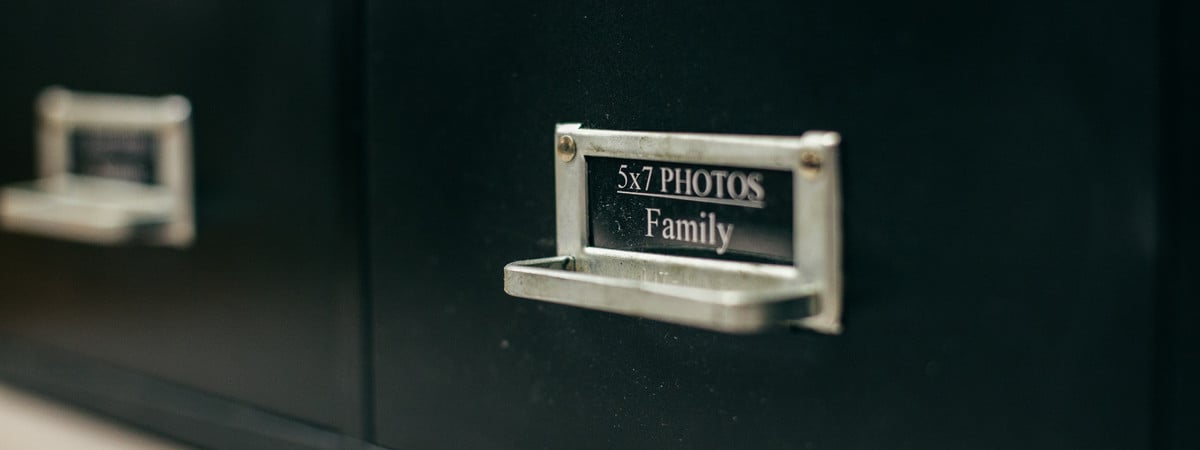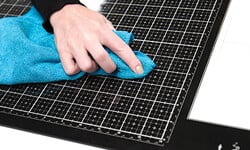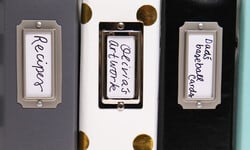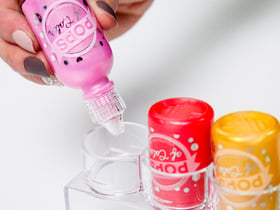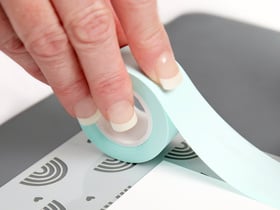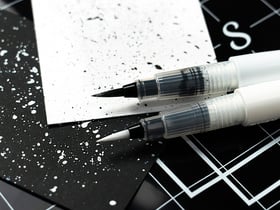Most of us do much better in life when we're organized. And for scrapbookers, organization is especially important if we want to be creative and time-efficient. Most of us have forlornly faced a growing stack of unorganized photos or a bundle of envelopes packed with pictures waiting to be scrapped. Or we've endured frantic searches for that one perfect photo needed to finish a layout. In any case, adopting a method of photo organization that suits your style will ensure that you'll spend less time searching and more time creating.
Sorting Your Photos
Where to begin? Whether you've just rescued your photos from old, magnetic albums or have a towering stack waiting to be scrapped, or just received some new photos from your favorite printing company, start by deciding how you'd like to arrange your photos. Think of how you scrap and chose an organization method that will allow you to find subjects quickly. Here are a few suggestions:
Chronological Sorting
This method works best if you have a huge backlog of photos that may be on hold for a while. Go through your pictures and sort them into piles by year. Then re-sort each stack by month. While sorting, you may want to weed out any photos you're sure you won't use in layouts, i.e., blurry, poorly lit, or otherwise unusable. (You can store these in another container if you can't bear to part with them.) You can also discard photos that you'd like to give to friends or family members. While you are sorting and weeding use a photo-safe pen or pencil to jot dates, names, and other important facts onto the backs of your pictures. That way the information will be available when you're ready to scrap.
By Theme Sorting
Grouping by theme might be ideal if it's not important to you to scrap in date order. If you'd rather scrap specific subjects whenever the mood strikes, or if you think you might want to create themed albums later, you can sort photos into piles for specific holidays, vacations, sports, outings, friends, relatives, or child. The advantage to this system is that if you suddenly have the desire to scrap Christmas layouts, for example, you can compile all your photos quickly and complete pages for several years at once.
By Album Sorting
You can sort photos also according to the album in which they will appear. In my photo organizer, for example, I have sections for each child's album, the family album, a grandparents' album, and for smaller, themed projects. That way, when I get a layout idea for my daughter, for example, I know exactly where to look to find the pictures of her that I'll need.
Storing Your Photos
Once you have your photos in order, keep them in a storage box with index cards or divider tabs separating your categories. Some scrappers use shoe boxes or photo boxes available at stationery or discount stores. But there are also other storage options designed with scrapbooking in mind. My favorite is Storage Studio's Photo Case, which has room for more than 2,000 photos on one side and a large storage area as well (where I keep memorabilia like ticket stubs and brochures that I plan to scrap).
There are other storage units on the market as well. Research their capacity, features, durability, and price to find one that suits you best.
Organize for Speed and Efficiency
After you've organized your photos in a way that enables you to know what's where, you may wish to select, compile, and store specific groups of photos in preparation for individual layouts. This allows you to be effective, creative, and efficient with a minimum of hassles. Here are a few tried-and-true methods:
Post-it Notes®
This is the system that works wonders for me…when sorting photos. I immediately
find the best ones from each event and group them according to layouts I plan to create. I use a Post-it Note® to keep each subject together, adhesive stuck to the back of one photo, then folded over to hold the rest. On the paper, I note what the subject of the layout will be, and include any other ideas such as potential titles and embellishments . I also add an asterisk if there is memorabilia that I have elsewhere and plan to use on the page. I store these small groups of photos in poly envelopes, one for each album in progress.
Page Protectors
After removing the photos you don't plan to use, store the "keepers" in acid-free page protectors , one for each subject (for example, "Fourth of July 2000" or "Spring 2000 Disneyland Trip"). If you have any design notes, memorabilia, or ideas for journaling, drop them in as well. Then, if you need to shop for special cardstock, Patterned Paper or embellishments for that particular layout, take the page protector with you to match items with the photos—then store your purchases in the page protector, too. (A simple way to keep these together is using an inexpensive three-ring binder.) This system will work well if you attend a lot of crops. You can decide which layouts you plan to work on, grab the protectors containing all the page elements, and go!
Large Envelopes
You can use this system in practically the same way as you would page protectors . If you use paper envelopes, you can jot notes such as potential titles, embellishments , and journaling on the envelope itself.
Divided Organizers
Divided organizers, such as totes or large coupon holders, are roomy enough to hold groups of 4"x6" photos. Simply write the layout topic on the divider tab and slip any notes or memorabilia into the pocket along with the photos.
Developer Envelopes
If you take several photos of the same event, you can keep your photos in the envelope they came in from the developer. To make finding them easier, write the activity and date on the outside of the envelope, along with any journaling notes. You can store these chronologically or by subject, if you desire.
Once you find a photo organization system that works best for you, keeping it up-to-date will allow you to find the photos you're looking for, quickly and easily, for any layout. Without the time-consuming task of searching for the right pictures, you'll find that your scrapping sessions are more productive and enjoyable, too!













